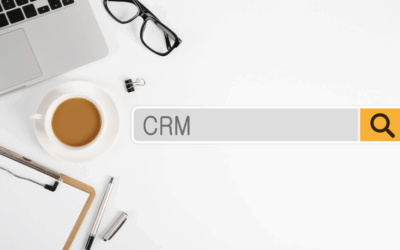Would your employees recognize a phishing email before clicking? We ran a live phishing simulation using a fake DHL email. For some clients, the click rate reached over 30% — with some employees even entering their credentials, unknowingly exposing sensitive data.
This test highlighted a critical cybersecurity gap many businesses face. The good news? Awareness and proactive measures can significantly reduce the risks.
Here’s what happened in the test, what it revealed about employee behavior, and actionable steps to protect your business.
Watch the phishing test in action.
Inside the Test: A Real-Life Phishing Email Example
At CloudConnected, we conducted a phishing email test for a clients’ teams. Here’s what happened:
We crafted a convincing email that appeared to come from DHL. The email included a tracking number, a link, and an urgent request to verify delivery details.
The results were worrying, with click rates reaching over 30% for some clients.
What Did We Learn?
- Many employees don’t stop to verify sender details or URLs before clicking.
- Urgent tones in phishing emails create pressure, leading to hasty actions.
- Even harmless-looking emails can deceive employees.
- Cybercriminals are using increasingly sophisticated tactics.
- Without ongoing training, businesses remain vulnerable to phishing attacks.
These insights emphasize the need for ongoing phishing tests to strengthen defenses against phishing email scams.
The Consequences of Falling for Phishing Email Scams
Falling for phishing emails can seriously affect businesses. Here are some major risks:
- Reputation Damage: A data breach caused by phishing can harm customer trust and affect your brand’s reputation.
- Legal Issues: Leaked customer or company data can result in lawsuits, regulatory fines, and compliance violations.
- Financial Loss: Businesses may face ransomware payments, recovery costs, or lost revenue due to phishing attacks.
- Operational Disruption: Critical systems may be affected, causing downtime and interruptions to workflows.
There are simple ways to recognize phishing emails and prevent harm.
How to Detect a Phishing Email
Spotting phishing emails is essential for preventing cyber threats. Use these three checks before clicking on any email:
- Check the Sender’s Email Address: Scammers often use email addresses that seem informal or unprofessional, like john@gmail.com, rather than corporate ones. They may also include extra characters or subtle spelling errors to trick recipients.
- Hover Over Links / Buttons: Before clicking on a link, hover over it to see the real URL. If it looks suspicious or unrelated, don’t click.
- Confirm the Source: If an email from a coworker or service provider asks for sensitive information, verify the email directly with them before acting.
Teaching employees these checks is important, but there are other steps you can take to strengthen your business’s cybersecurity strategy.
Understanding Spear Phishing
Spear phishing is a more targeted form of phishing. Unlike generic phishing emails, spear phishing emails are tailored to specific individuals or organizations. Cybercriminals often use personal details, such as names or job titles, to make the email appear legitimate.
For example, a spear phishing email sample might look like it came from a company’s CEO, requesting urgent payment for a fake invoice. This tactic exploits trust and creates a sense of urgency, making it harder for recipients to identify the scam.
Strengthening Your Cybersecurity Strategy
Strengthening your cybersecurity strategy requires more than just awareness. By combining these proactive measures, businesses can significantly reduce their risk of phishing attacks and other cyber threats.
- Run Phishing Email Tests: Simulated tests check how employees respond to phishing and reinforce training where needed.
- Provide Regular Training: Cyber threats change, so employee knowledge needs to stay updated. Regular cybersecurity training helps staff understand phishing email examples and learn how to avoid falling for phishing scams.
- Use Security Tools: Advanced email filters, multi-factor authentication, and endpoint security tools can significantly reduce the risk of phishing attacks.
- Encourage Reporting: Make it easy for employees to report suspicious emails. A clear reporting process helps address potential threats quickly.
Final Thoughts
Phishing emails remain one of the biggest security threats for businesses. Without proactive measures, companies risk financial losses, reputation damage, and operational disruptions.
Regular phishing email tests can find weaknesses and improve defenses. Training employees, using security tools, and running phishing simulations can reduce the risk of cyberattacks.
Want to know how your team would respond? At CloudConnected, we offer phishing tests and cybersecurity training to keep your business secure.
Get in touch to schedule a phishing email test for your company!




